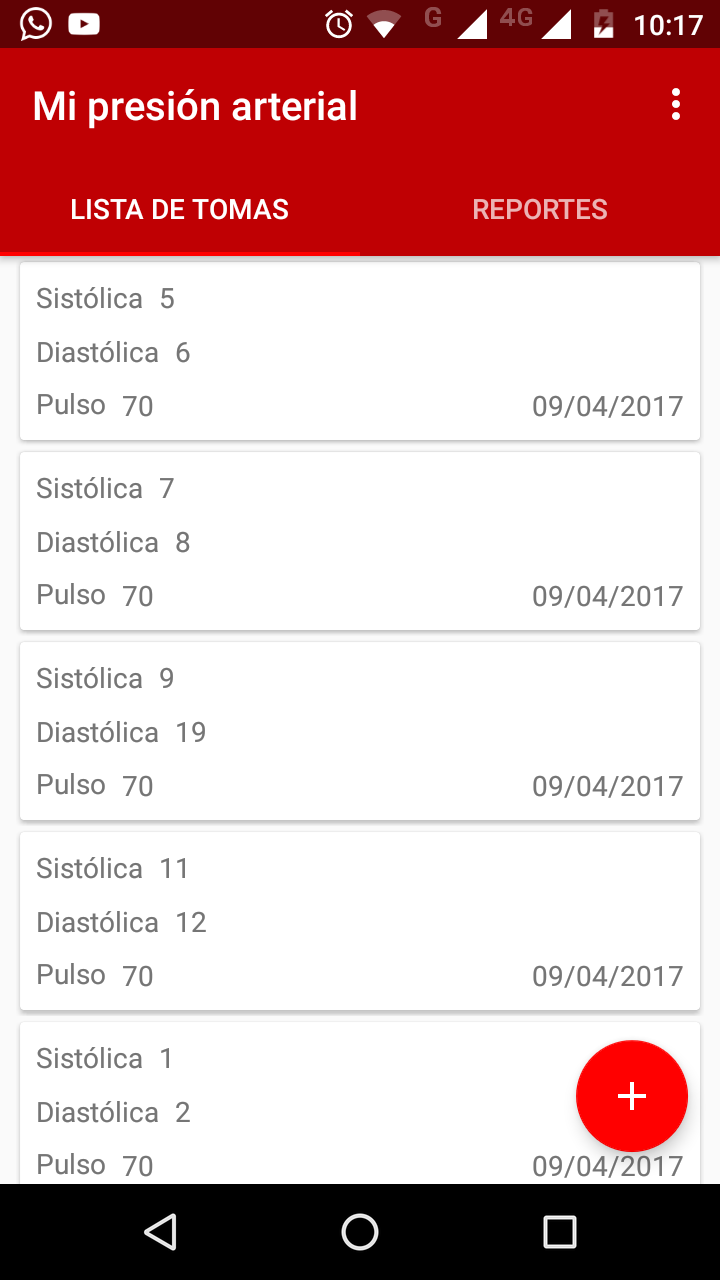使用 JAX-RS 继承
时间:2023-09-27问题描述
我正在为我的网络服务使用 JAX-RS.我有共同的功能,想使用继承.我提供简单的 CRUD 操作.我已经定义了一个这样的接口:
I am using JAX-RS for my web services. I have common functionality and would like to use inheritance. I am providing simple CRUD operations. I have defined an interface like so:
public interface ICRUD {
@POST
@Consumes("application/json")
@Produces("application/json")
@Path("create")
public String createREST(String transferObject);
@GET
@Consumes("application/json")
@Produces("application/json")
@Path("retrieve/{id}")
public String retrieveREST(@PathParam("id") String id);
@POST
@Consumes("application/json")
@Produces("application/json")
@Path("update")
public void updateREST(@Suspended final AsyncResponse asyncResponse,
final String transferObject) ;
@DELETE
@Consumes("application/json")
@Produces("application/json")
@Path("delete/{id}")
public String deleteREST(@PathParam("id") String id);
}
我有一个实现这个接口的抽象类:
I have an abstract class that implements this interface:
public abstract class BaseREST implements ICRUD{
private final ExecutorService executorService = Executors.newCachedThreadPool();
@Override
public String createREST(String transferObject) {
return create(transferObject).toJson();
}
@Override
public String retreiveREST(@PathParam("id") String id) {
return retreive(id).toJson();
}
@Override
public String deleteREST(
@PathParam("id") String id) {
return delete(id).toJson();
}
@Override
public void updateREST(@Suspended final AsyncResponse asyncResponse, final String transferObject) {
executorService.submit(new Runnable() {
@Override
public void run() {
asyncResponse.resume(doUpdateREST(transferObject));
}
});
}
}
最后,我的实现类只是为资源提供了一个 PATH:
And lastly, my implementing class simply provides a PATH for the resource:
@Path("meeting")
public class MeetingRestServices extends BaseREST {
}
当我尝试访问我的资源时(假设上下文根是/):
When I try to access my resource at (assuming the context root is /):
http://localhost:8080/webresources/meeting/retreive/0
我得到一个 404,它说它找不到它.我的想法是,在继承的某个地方,它弄乱了我认为资源应该在哪里的路径.对此有什么想法吗?
I get a 404, it says it can not find it. My thoughts are that somewhere in the inheritance, it is messing with the path of where I think the resource should be. Any thoughts on this?
webresources 定义如下.此类由 Netbeans 自动添加.
webresources is defined below. This class is added automatically by Netbeans.
@javax.ws.rs.ApplicationPath("webresources")
public class ApplicationConfig extends Application {
@Override
public Set<Class<?>> getClasses() {
Set<Class<?>> resources = new java.util.HashSet<>();
addRestResourceClasses(resources);
return resources;
}
/**
* Do not modify addRestResourceClasses() method.
* It is automatically populated with
* all resources defined in the project.
* If required, comment out calling this method in getClasses().
*/
private void addRestResourceClasses(Set<Class<?>> resources) {
resources.add(com.dv.meetmefor.ws.impl.BinaryDataRestService.class);
resources.add(com.dv.meetmefor.ws.impl.ImageRestServices.class);
resources.add(com.dv.meetmefor.ws.impl.LocaleRestService.class);
resources.add(com.dv.meetmefor.ws.impl.MeetUpRestServices.class);
resources.add(com.dv.meetmefor.ws.impl.MeetingRestServices.class);
resources.add(com.dv.meetmefor.ws.impl.UserAccountRestServices.class);
}
}
推荐答案
你上面描述的看起来不错.以下是 JAX-RS 继承规则,这些规则基于您提供的内容.
What you've described above looks good. Here are the rules for JAX-RS inheritance which based on what you've provided you are adhering.
来自 JAX-RS 规范 §3.6:
JAX-RS 注释可以用于超类或已实现的方法和方法参数界面.此类注解由相应的子类或实现类继承方法,前提是该方法及其参数没有任何自己的 JAX-RS 注释.注释超类上的优先级高于已实现接口上的优先级.如果一个子类或实现方法具有任何 JAX-RS 注释,然后是超类或接口方法上的所有注释被忽略.例如:
JAX-RS annotations MAY be used on the methods and method parameters of a super-class or an implemented interface. Such annotations are inherited by a corresponding sub-class or implementation class method provided that method and its parameters do not have any JAX-RS annotations of its own. Annotations on a super-class take precedence over those on an implemented interface. If a subclass or implementation method has any JAX-RS annotations then all of the annotations on the super class or interface method are ignored. E.g.:
public interface ReadOnlyAtomFeed {
@GET @Produces("application/atom+xml")
Feed getFeed();
}
@Path("feed")
public class ActivityLog implements ReadOnlyAtomFeed {
public Feed getFeed() {...}
}
在上面,ActivityLog.getFeed从接口继承了@GET和@Produces注解.反之:
In the above, ActivityLog.getFeed inherits the @GET and @Produces annotations from the interface.
Conversely:
@Path("feed")
public class ActivityLog implements ReadOnlyAtomFeed {
@Produces("application/atom+xml")
public Feed getFeed() {...}
}
在上面,ReadOnlyAtomFeed.getFeed上的@GET注解不是被ActivityLog继承的.getFeed
In the above, the @GET annotation on ReadOnlyAtomFeed.getFeed is not inherited by ActivityLog
.getFeed
这篇关于使用 JAX-RS 继承的文章就介绍到这了,希望我们推荐的答案对大家有所帮助,也希望大家多多支持html5模板网!
相关文章
 如何检测 32 位 int 上的整数溢出?How can I detect integer overflow on 32 bits int?(如何检测 32 位 int 上的整数溢出?)
如何检测 32 位 int 上的整数溢出?How can I detect integer overflow on 32 bits int?(如何检测 32 位 int 上的整数溢出?) return 语句之前的局部变量,这有关系吗?Local variables before return statements, does it matter?(return 语句之前的局部变量,这有关系吗?)
return 语句之前的局部变量,这有关系吗?Local variables before return statements, does it matter?(return 语句之前的局部变量,这有关系吗?) 如何将整数转换为整数?How to convert Integer to int?(如何将整数转换为整数?)
如何将整数转换为整数?How to convert Integer to int?(如何将整数转换为整数?) 如何在给定范围内创建一个随机打乱数字的 intHow do I create an int array with randomly shuffled numbers in a given range(如何在给定范围内创建一个随机打乱数字的 int 数组)
如何在给定范围内创建一个随机打乱数字的 intHow do I create an int array with randomly shuffled numbers in a given range(如何在给定范围内创建一个随机打乱数字的 int 数组) java的行为不一致==Inconsistent behavior on java#39;s ==(java的行为不一致==)
java的行为不一致==Inconsistent behavior on java#39;s ==(java的行为不一致==) 为什么 Java 能够将 0xff000000 存储为 int?Why is Java able to store 0xff000000 as an int?(为什么 Java 能够将 0xff000000 存储为 int?)
为什么 Java 能够将 0xff000000 存储为 int?Why is Java able to store 0xff000000 as an int?(为什么 Java 能够将 0xff000000 存储为 int?)
 如何使用 SimpleDateFormat.parse() 将 Calendar.toString()How can I Convert Calendar.toString() into date using SimpleDateFormat.parse()?(如何使用 SimpleDateFormat.parse() 将 Calendar.toString() 转换为日期?)
如何使用 SimpleDateFormat.parse() 将 Calendar.toString()How can I Convert Calendar.toString() into date using SimpleDateFormat.parse()?(如何使用 SimpleDateFormat.parse() 将 Calendar.toString() 转换为日期?)